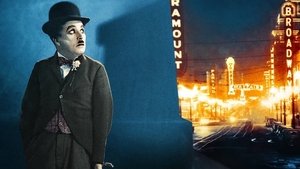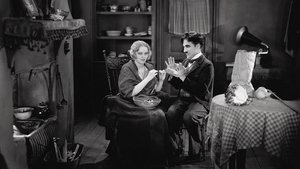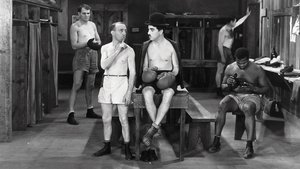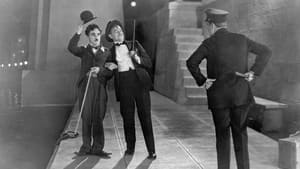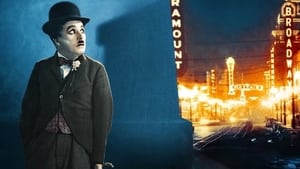Contact: [email protected]
Video Sources 0 Views
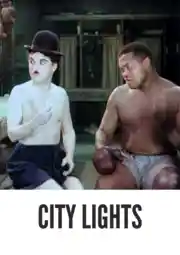
Synopsis
[ez-toc]




Introduction
In the realm of old movies, one gem stands out with a fresh vibrancy — “City Lights Colorized” (1931). The recent release of the colorized version has reignited the magic of Charlie Chaplin’s romantic comedy-drama. In this article, we delve into the making of City Lights Colorized, explore Chaplin’s genius, dissect the story and characters, and analyze the significance of colorizing this classic. Join us on this journey through time, where silent films meet the hues of modern cinema.
Read Media File Transfer Agreement: Terms and Conditions
Read FAQ
The Making of City Lights Colorized
As the world transitioned from silent films to sound, Charlie Chaplin’s “City Lights Colorized” (1931) emerged as a testament to the power of visual storytelling. In a time dominated by talkies, Chaplin chose to maintain the silence that defined his earlier works. The film’s score, however, played a pivotal role in complementing the narrative.
Jose Padilla and Arthur Johnston, the musical maestros behind the film’s enchanting score, added depth to the silent masterpiece. Padilla’s Latin-inspired compositions blended seamlessly with Johnston’s orchestral arrangements, creating a musical backdrop that enhanced the emotional impact of the story. Their collaboration highlighted the adaptability of silent film to the evolving cinematic landscape.
Bringing City Lights Colorized to Life with Music
The transition from silent to sound films brought forth a new appreciation for the importance of music in movies. In “City Lights Colorized,” the film score wasn’t merely an accompaniment; it was a character in itself, weaving emotions and nuances into the fabric of the narrative. The delicate balance between humor and heartbreak was enhanced by the carefully crafted musical themes, leaving an indelible mark on the viewer’s soul.
Examining the key musical themes in the film reveals the meticulous approach Padilla and Johnston took in underscoring pivotal moments. From the whimsical tune that accompanies The Tramp’s comedic escapades to the melancholic melody that underscores his poignant encounters, the music served as a silent yet powerful dialogue, intensifying the emotional resonance of the film.
The Timeless Appeal of Charlie Chaplin’s Performance
At the heart of “City Lights Colorized” lies the incomparable acting prowess of Charlie Chaplin. His iconic portrayal of The Tramp, a character synonymous with resilience and humor, remains a cornerstone in the history of cinema. In this romantic comedy-drama, Chaplin’s ability to convey profound emotions without uttering a single word is nothing short of remarkable.
Analyzing Chaplin’s performance in “City Lights Colorized” unveils the intricacies of his acting style. The physicality, facial expressions, and gestures employed by Chaplin transcended language, creating a universal connection with audiences worldwide. The Tramp became a symbol of hope and humor, navigating through a world that often seemed indifferent.
The Enduring Legacy and Influence of City Lights Colorized
Decades after its release, “City Lights Colorized” continues to exert its influence on cinema. The film’s enduring popularity and critical acclaim have solidified its place in the annals of film history. Inclusion in the National Film Registry and recognition as a cinematic masterpiece attest to the cultural impact it has had.
The American Film Institute’s lists further highlight the film’s significance, with “City Lights Colorized” consistently ranking among the greatest films of all time. Its timeless appeal lies in its ability to evoke laughter, tears, and introspection, transcending the boundaries of its era.
Restoring and Colorizing Classic Films: The Case of City Lights Colorized
The restoration and preservation of classic films are crucial for ensuring that cinematic treasures like “City Lights” are accessible to future generations. The journey to colorize this black-and-white masterpiece, however, comes with its own set of challenges and controversies.
Film restoration not only preserves the visual quality but also honors the artistic intent of the creators. It is a meticulous process that requires expertise and dedication to bring back the original glory of the film. However, the introduction of colorization sparks debates about authenticity and the potential alteration of the director’s vision.
Evaluating the Colorized Version of City Lights
With the release of the colorized edition of “City Lights,” audiences are presented with a unique opportunity to experience the film in a new light. The vibrant colors breathe life into the scenes, offering a fresh perspective on the timeless romance.
As with any colorization project, there are pros and cons to consider. The addition of color may enhance the visual appeal for some, providing a more immersive experience. However, purists argue that the charm of the original black-and-white cinematography is irreplaceable. The debate surrounding colorization extends to questions of artistic integrity and whether it enhances or detracts from the intended atmosphere.
Comparing the original and colorized versions prompts reflection on the evolving nature of cinema. While the colorization may not resonate with everyone, it introduces “City Lights” to a new generation of viewers who may find the film more relatable with the addition of color.
Conclusion
In the realm of old movies, “City Lights Colorized 1931” stands as a testament to the timelessness of Charlie Chaplin’s genius. As we encourage readers to explore both the original and colorized versions, we celebrate the evolution of cinematic artistry. The enduring legacy of “City Lights” is not confined to black-and-white frames; it transcends the hues of time.
As we bid farewell to The Tramp under the city lights, let us embark on a journey through the golden age of cinema. Old movies in color breathe new life into classics, providing a bridge between generations. Watch “City Lights” in its original form and then explore the colorized edition to appreciate the film’s timeless beauty and evolution. Let this be an invitation to revisit other classic films that could benefit from the transformative touch of colorization techniques. In the kaleidoscope of cinema, every shade tells a story, and “City Lights Colorized 1931” adds a vibrant chapter to the ongoing narrative of film history.

